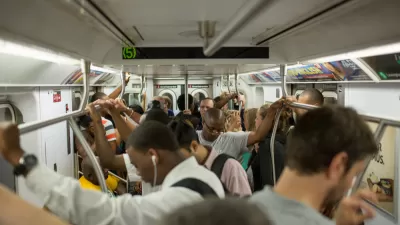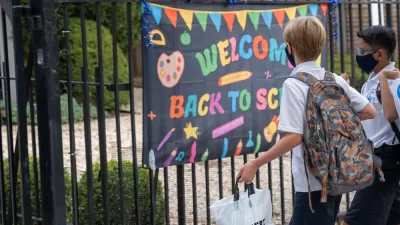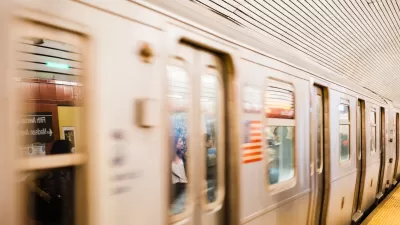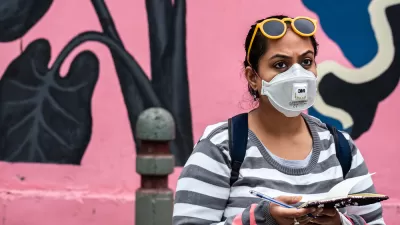Detailed animations of ventilation systems in New York City subway cars provide transit riders with a better understanding of the possibility of community spread in subway cars.

Former public transit riders wary of returning to New York subways might cite uncertainty about safety conditions and community spread as a reason for avoiding the popular form of transportation. Doing their part to arm the public with information, Mika Gröndahl, Christina Goldbaum, and Jeremy White published a New York Times article complete with in-depth information about the possibility of spread on New York City subways complete with helpful animations. Now subway riders can understand the risks, safety measures, and interventions for preventing community spread when riding the subway.
"Many New Yorkers are avoiding the subway, fearful of jostling with strangers in crowded cars. Masks and social distancing are essential, but good air flow is also key to reducing the risk of exposure to the coronavirus," write Gröndahl, Goldbaum, and White.
In one animation, a side-by-side comparison simulates the spread of droplets from someone sneezing with and without a mask, showing the efficacy of mask wearing in public spaces for reducing viral spread. "Public health experts say that the high air exchange rate and widespread mask usage on the city’s subways sharply reduces the chances of a so-called superspreader event on trains," say Gröndahl, Goldbaum, and White.
The team notes that only 2% of the 5.5 million weekday New York City subway riders currently occupy trains. Public health experts say that if pre-pandemic occupancy levels were suddenly reached, even with masks, the efficacy of the ventilation system would be greatly reduced.
FULL STORY: What Happens to Viral Particles on the Subway

Planetizen Federal Action Tracker
A weekly monitor of how Trump’s orders and actions are impacting planners and planning in America.

Canada vs. Kamala: Whose Liberal Housing Platform Comes Out on Top?
As Canada votes for a new Prime Minister, what can America learn from the leading liberal candidate of its neighbor to the north?

The Five Most-Changed American Cities
A ranking of population change, home values, and jobs highlights the nation’s most dynamic and most stagnant regions.

Housing, Supportive Service Providers Brace for Federal Cuts
Organizations that provide housing assistance are tightening their purse strings and making plans for maintaining operations if federal funding dries up.

Op-Ed: Why an Effective Passenger Rail Network Needs Government Involvement
An outdated rail network that privileges freight won’t be fixed by privatizing Amtrak.

‘Quality Work, Fast’: NC Gears up for Homebuilding After Helene, Trying to Avoid Past Pitfalls
The state will field bids to demolish, repair and rebuild homes in the mountains. After struggles in eastern NC, officials aim to chart a different course.
Urban Design for Planners 1: Software Tools
This six-course series explores essential urban design concepts using open source software and equips planners with the tools they need to participate fully in the urban design process.
Planning for Universal Design
Learn the tools for implementing Universal Design in planning regulations.
Central Transportation Planning Staff/Boston Region MPO
Heyer Gruel & Associates PA
Institute for Housing and Urban Development Studies (IHS)
City of Grandview
Harvard GSD Executive Education
Regional Transportation Commission of Southern Nevada
Toledo-Lucas County Plan Commissions





























